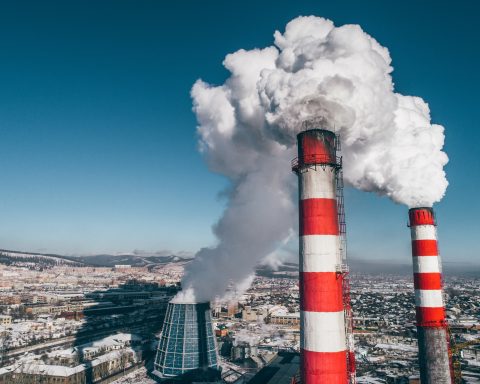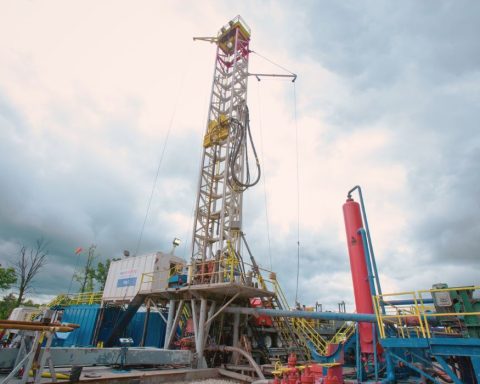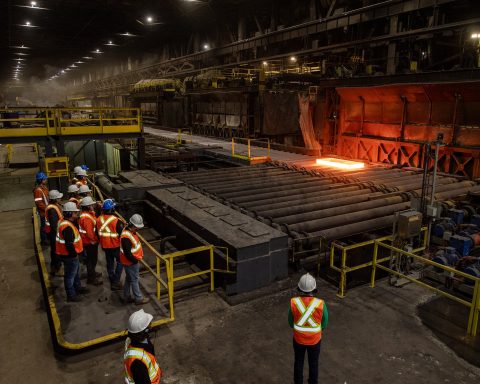Former prime minister Mackenzie King once quipped, “If some countries have too much history, we have too much geography.” Canada has less than 0.5% of the world’s population, generates only 1.4% of global GDP and 1.6% of global greenhouse gas emissions, but is the second-largest country in the world geographically, with 6.1% of the global land mass (nine million square kilometres), more than 4% of the planet’s arable land and 9% of the world’s forests. Canada is also a top producer of potash, cadmium, cobalt and nickel, and has globally significant deposits of many other minerals essential to the energy transition.
The exploitation of this disproportionate abundance of natural resources was a defining feature of Canada’s modern economic development; a relatively small share of the world market for any of these resources resulted in relatively large per capita export earnings for Canadians. The Canadian Prairies became known to some as “the bread basket of the world,” and in 1930, University of Toronto professor Harold Innis used the biblical phrase “hewers of wood and drawers of water” to describe Canadians’ dependence on resource production. The perennial struggle to “move up the value-added curve” has plagued Canadian economic progress, and the export of primary resources rather than higher-value products remains an ongoing challenge (eg. bitumen rather than refined petroleum, pulp rather than paper, hydropower rather than electricity-intensive products, wood pellets rather than high-value forest-based fibres and chemicals).
Heavy industry – the manufacturing of cement, steel, chemicals, pulp and paper, and non-ferrous metal smelting and refining (including aluminum) – is deeply rooted in Canada’s economic history. While the contribution of these industries to the national economy has been declining, they remain economic and employment mainstays for many communities, and for the most part they have been holding their own in competitive global markets where innovation is driving rapid change.
The direct contribution of these energy-intensive heavy industries to Canada’s GDP is only 2%; however, as a result of their high energy use and emission-intensive processes, their greenhouse gas emissions comprise 9% of Canada’s total GHG inventory. As such, heavy industries are a focus area for Corporate Knights’s recently launched Earth Index initiative, which tracks progress toward meeting national 2030 targets on the road to a net-zero future.
Earth Index target
In 2019 (the most recent year for which we have complete data), emissions from heavy industry were 65 megatonnes of CO2 equivalent (Mt CO2e), 15% lower than they were in 2005. To meet Canada’s prorated share of emission reduction commitment (45% by 2030, relative to 2005), emissions from these industries would have to decline at an average rate of 4.2% per year, more than four times faster than the rate of decline over the past 15 years. While there is much that can and should be done to improve the efficiency and reduce the carbon intensity of the status quo, incrementalism will not suffice. The low-carbon transition is a fundamental game changer for heavy industry.
Heavy Industry in Canada – By the Numbers

Canada’s greenhouse gas emissions neither grew nor declined much in the past 15 years, and heavy industry emissions (represented by the shaded red area above) are no exception, having declined less than 1% annually since 2005.
Some indicators of the level and pattern of greenhouse gas emissions from these industries are in the table below, and there are a number of attributes of these industries that pose unique challenges with regard to deep emissions reductions.

Sources: Environment and Climate Change Canada and Statistics Canada
The high energy intensity combined with the reliance on combustion-based production technologies makes the heavy industries among the most greenhouse gas intensive, as measured by tonnes of greenhouse gas per dollar of GDP. The relatively large contribution of fuel and electricity to the total cost of production in these industries provides a strong incentive to improve technological energy efficiency, to look for process innovations that require less energy, and to pursue production strategies that increase the economic value created for every unit of fuel burned. Notwithstanding the slow growth in the heavy industry sector, greenhouse gas intensities have been stable or declining in the cement, chemicals and non-ferrous metals industries. Carbon pricing adds further impetus to find low-carbon pathways, but at the moment these industries are mostly exempt from paying carbon tax as per the federal government’s Output-Based Pricing System. Trade concerns and the complexities of implementing a border carbon adjustment tax suggest that a system of carrots (guaranteed top-ups for relevant heavy industry materials that meet net-zero criteria) rather than sticks may be a more fruitful path to decarbonization.
While we have grouped these industries together for the Earth Index to consider the possibilities for greenhouse gas mitigation, they are quite different from each other, and there can be large variations in energy and emission intensities within an industry. For example, in the pulp and paper sector, while value added is down by 40% throughout the industry, the energy intensity, emissions intensity and electrification of the newsprint mills have all improved since 2005, while those same indicators have deteriorated in the pulp and other paper product mills.
Greenhouse gas emissions from heavy industry have declined only slightly since 2005. Declining value added has been offset by stable or growing emissions intensities (emissions per dollar of value added). And high energy intensity is a defining characteristic of these industries, with energy consumption per dollar of GDP up to 20 times higher than for general manufacturing and even higher relative to the service industries that now make up two-thirds of Canada’s economic output. Fuel and electricity costs are a much higher factor cost for these industries than for the rest of the business economy, reaching 20% of value added and more. A qualitative attribute related to their energy intensity is that the level and pattern of energy consumption for these primary manufacturers is integral to their production technologies, which have historically included high-temperature operations in capital-intensive plants (kilns, furnaces, smelters, pulpers) that have relatively long capital turnover rates. Capital renewal presents opportunities for deep reductions in GHG intensity.
Half the greenhouse gas emissions from heavy industry are non-combustion related and result from chemical reactions that are integral to the material transformations taking place in the industry processes. Process emissions account for more than half the greenhouse gas emissions for cement, steel, non-ferrous smelting and refining (including aluminum), and more than 40% for the chemical industry.
Electricity’s share of total energy use varies among the heavy industries but has not changed much over time. The non-ferrous metals industry (including aluminum) is particularly electricity-intensive and concentrated in provinces with relatively inexpensive hydropower resources. The substitution of GHG-intensive combustion process technologies with electrified technologies (for example in primary steelmaking) is expected to be an important contributor to the decarbonization of heavy industry.
Recycling is particularly important for the heavy industries. There is often a several-fold difference in the energy and emission intensities of producing steel, paper, aluminum and other metals from recycled inputs as compared with virgin inputs. Recycling has long since been mainstreamed in these industries, and recycling of cement and plastics promises similar benefits.
The heavy industries have a unique and challenging risk profile that results from the confluence of long capital investment cycles, uncertain and volatile markets in trade-intensive and globally competitive industries, uncertainty about future costs for fuel and electricity, and the ever present risk of stranded production capacity resulting from product and service innovations that reduce the need for steel, cement, plastic, paper and other heavy industry products.
For the heavy industries to pull their weight in the low-carbon transition will require bold and disruptive innovation in technology, policy and business strategies. To be effective, policy and business strategies will need to be tailored to the market dynamics and technological possibilities of the individual industries and responsive to the global contexts in which they operate.
Canadian industry and the global carbon transition
As the transition to a sustainable economy that runs on renewable energy and the circular flow of materials gains momentum, Canada will continue to be challenged to move up the value-added curve. There will be many opportunities for Canada to “punch above its weight” in supporting the global sustainability transition by combining its natural resources advantage with its hard-earned know-how to earn export revenue while contributing to greenhouse gas mitigation on a scale that dwarfs the emissions of its own heavy industries. Consider two examples: bitumen and strategic minerals.
Beyond bitumen
We are the fourth-largest oil producer in the world, and we have the largest natural deposit of bitumen, which has uniquely high concentrations of asphaltene, a potentially lucrative feedstock for lightweight materials. Instead of extracting oil from the bitumen to burn in tailpipes, we could harvest materials that are more valuable than oil, including carbon fibres, which would be the material of choice in construction and for making electric cars and trains if we can crack the cost nut.
Strategic minerals
Electrification is a central element of decarbonization strategies everywhere, and Canada has large reserves of the minerals that will be needed for rapidly expanding battery markets, including nickel, cobalt, graphite and lithium (from oilfield brines). Canada is one of the few countries that has all the elements to produce a lithium-ion battery for electric vehicles and is also the global hub for mining finance, with the Toronto Stock Exchange being the world’s number-one mining and exploration listing venue.
We have become accustomed to thinking of the primary processors and materials industries as being energy- and carbon-intensive, but this will have to change in a low-carbon future. Innovation and electrification are delivering lower-emission technologies for the production of steel, cement and industrial chemicals, and there is a growing demand for the minerals, fibre and natural chemicals that are needed for the realization of advanced, circular economies. Central to this transition will be a shift to higher value-added production, and Canada has both the ecosystems and the know-how to lead the world in the development of the global post-carbon economy.







